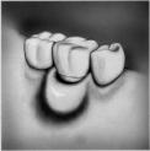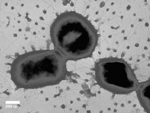
An EXCELLENT place to learn about root canal alternatives, tooth decay, cavities, periodontal disease, gingivitis, plaque,
tarter, dentists, preventive dentistry, in-home dental care and oral hygiene. START SAVING DENTAL DOLLARS NOW!
Vitamin BoostFrom muscle strength to immunity, scientists find new vitamin D benefits |
|
  |
Janet
Raloff
First in a two-part series The story of vitamin D would appear simple. Take in enough sun or drink enough fortified milk to get the recommended daily amount, and you'll have strong bones. Take a supplement, if you want insurance. But recent studies from around the world have revealed that the sunshine vitamin's role in health is far more complex. More than just protecting bone, vitamin D is proving to preserve muscle strength and to give people some protection against deadly diseases including multiple sclerosis (MS), diabetes, and even cancer. <>What's now clear is that vitamin D is a potent force in regulating cell growth, immunity, and energy metabolism, observes David Feldman of Stanford University School of Medicine. He's the editor of a new 1,300-page compilation of research findings from more than 100 labs working on this substance (2004, Vitamin D, Academic Press). Not only is the vitamin gaining increasing respect as a governor of health, he notes, but it's also serving as the model for drugs that might tame a range of recalcitrant diseases.Ironically, observes bone-metabolism specialist Robert P. Heaney of Creighton University Medical Center in Omaha, Neb., vitamin D is a misnomer. "A vitamin is an essential food constituent that the body can't make," he explains, but people have the capacity, right in their skin, to produce all the vitamin D they need from a cholesterol-like precursor. Once vitamin D is available, the body converts it first into
25-hydroxy vitamin D and then into 1,25-dihydroxy vitamin D (1,25-D).
This final form, which is actually a hormone, is the only active
variety. Researchers loosely refer to all three substances in this
biochemical cascade as "vitamin D." The immune reaction known as inflammation can also be a leading player in gum disease and tooth loss. Low blood concentrations of vitamin D were linked to gum disease in a study of 11,200 men and women... The human body can generate 10,000 to 12,000 international units (IU) of vitamin D from a half-hour of summer-sun exposure. The National Academies recommend that adults, depending on their age, get from 200 to 600 IU of the vitamin each day. In practice, however, most people in the United States get a daily intake from food and sun exposure well below that recommended intake, especially during winter. People living in the United States and Europe or farther from the equator have trouble getting enough sun to maintain adequate blood concentrations of the vitamin. When people heed dermatologists' warnings about preventing skin cancer by limiting sun exposure and using sunscreen, they also reduce their vitamin D production.
Attack mode Other correlations between vitamin D and health have captured researchers' attention. Kassandra L. Munger of the Harvard School of Public Health in Boston recently presented evidence of what appears to be a protective effect of vitamin D against MS. In two ongoing studies of 187,500 U.S. nurses, women getting at least 400 IU of vitamin D per day showed only 60 percent the risk of developing MS compared with women getting less of the vitamin, Munger and her colleagues reported in the Jan. 13 Neurology. These findings not only confirmed a link seen earlier in animals but also fit with several long-standing geographic observations. The incidence of MS and other autoimmune diseases—in which a person's immune system attacks parts of his or her own body—tend to be rare near the equator, where ultraviolet light from the sun is intense and people produce abundant vitamin D. For 2 decades, scientists have known that certain immune cells in the blood possess receptors for 1,25-D, the active form of vitamin D. To probe why, Margherita T. Cantorna of Pennsylvania State University in University Park and her colleagues incubated white blood cells with 1,25-D. The team found that the hormone inactivates a type of immune cell called a killer T lymphocyte. These are the cells that launch immune attacks against material invading the body, as well as native cells that have become infected or malignant. Killer T lymphocytes also drive autoimmune diseases. Over the years, Cantorna's team has shown in animal models of MS, lupus, inflammatory bowel disease, and type 1 diabetes that autoimmune symptoms diminish or disappear after the animal receives either 1,25-D or chemical analogs of it. The group has even shown, in a mouse study, that such drugs can prevent rejection of a transplanted heart. Cantorna and others have turned to 1,25-D analogs for potential therapeutic applications of vitamin D because excessive amounts of 1,25-D can raise blood-calcium concentrations to toxic levels, which can lead to kidney stones and heart disease. The analogs that drug companies have devised mimic many of the vitamin's effects on cells but produce less of an increase in blood calcium. Cantorna explains that her animal studies have benefited from the analogs because the 1,25-D doses needed to have an anti-autoimmune effect "were pushing the envelope of what's safe." Companies are now beginning trials with such drugs in patients with autoimmune diseases. Recently, Cantorna has focused on the mechanism of vitamin D's immune benefits. Her findings indicate that the vitamin's availability during T cell development influences how the mature cells operate. Vitamin D deficiency leads the cells to produce agents that are more reactive to other cells than are those produced when the killer T cells grow up with abundant vitamin D. Cantorna suspects that once full-blown autoimmune disease appears, "you've already lost your window of opportunity to change the kind of T cells that develop." The immune reaction known as inflammation can also be a leading player in gum disease and tooth loss. Low blood concentrations of vitamin D were linked to gum disease in a study of 11,200 men and women who had taken part in the federally sponsored National Health and Nutrition Examination Survey, Thomas Dietrich of Boston University's dental school and his colleagues report. The rate of loss in tooth-gum attachment was 25 percent higher
among those participants with the least vitamin D compared to those
with the most vitamin. Since poor attachment correlated with low
vitamin D even when bone density was taken into account, the
investigators say that the observed effect probably stemmed from the
vitamin's effect on immunity. They conclude in the July 1 American
Journal of Clinical Nutrition that vitamin D "may be important for
preventing tooth loss." Subscribe to the OraMedia Newsletter for Dental Self
Sufficiency OraMedia
Home | Articles
on Gum Disease
| Newsletter Archive
| Dr. Robert O. Nara
Interview: Freedom From
Dental Disease | Healthy Teeth and Gums
| 3 Steps to Acheiving
Proper Oral Health
| Let your Teeth Heal
Themselves | How to Eliminate the Dentist From
Your Life
| Healthy Teeth in
Children
| FAQ - Frequently Asked
Questions | Q&A With a Periodontal
Patient
| Make Your Own
Toothpaste
| What Are You Brushing
With? (Make your
Own Toothpaste Part 2) |
 By studying the subtle effects of vitamin D
deficiency and
boosting animals' exposure to it in laboratory tests, researchers have
been slowly teasing out the vitamin's myriad benefits.
By studying the subtle effects of vitamin D
deficiency and
boosting animals' exposure to it in laboratory tests, researchers have
been slowly teasing out the vitamin's myriad benefits.